Ok. Phew. What a workshop! That training was a whirlwind of information: intense, fast-paced, exhilarating, and inspiring. You head back to your home or office ready to apply these new methods, philosophies, and tools. You see the value. You know it’s gonna work!
Now, you just need your co-workers and clients to join you.
That can be more challenging than it looks at first glance. People resist change and avoid new ways of working for plenty of reasons: Maybe they think their way works just fine. Or maybe they aren’t interested in trying the latest “fad.” Maybe they are under a deadline and don’t think they have the time. Maybe they want to see results before they feel it’s “worth it.” Whatever the obstacle is, once you get them in the room, so to speak, you will want to find ways to get their buy-in and help them see the value of human-centered design (HCD).
Getting people “in the room” or “on the Zoom”
That first step of getting them in the room is no small hurdle to get over. Those excuses holding folks back from giving HCD a try could very well keep them from even accepting your invitation! So what can you do to convince them to attend your session? There are a number of choices you can make, and they will all depend on your audience and the way they normally get work done:
- Do they think HCD is new-age hogwash? Don’t even tell ‘em! Just say “I’m working on this really important project and I could really use your expertise for a couple of hours!”
- Do they report to you? Don’t even tell ‘em! Just say “At this week’s check-in meeting, we are going to use a new tool to prioritize our backlog, and we’ll evaluate it at the end.”
- Are they your family or friends?
Don’t even tell ‘em!😃 Here, maybe you ask: “Hi friend, I’ve learned these new tools for communication and problem solving, would you be willing to practice them with me?” - Are they metrics-driven business leaders? Take a moment and walk them through the KcKinsey report about The Business Value of Design.
- Are they keen to be early adopters or has your company started to really push the use of HCD? Hand-pick them to join the inner circle! “Hey, wanna get a head start on this new HCD thing we are doing? I have a chance to run a workshop next week and I’m looking for a few key teammates to get in front of the curve with me.”
Using these tactics can help create overt – and covert (shhh!) – opportunities to practice HCD. Now you’ve got your opportunity to share with them the power of design!
A three-pronged approach
I’ve worked with all kinds of organizations: the C-suite of billion-dollar companies, tiny local nonprofits, international businesses and organizations, theater professionals, consensus-based Home Owner Associations. I’ve made mistakes and missteps, lost some trust, and worked to regain it back. And I’ve also nailed it from time to time. This breadth of experience has taught me a lot about introducing HCD to people and how to make them want to come back for more. While each person is unique and has different perspectives, there are a few themes that appear to be true for all of these disparate groups. They all want work to be…
- Productive: visible progress has been made at the end of each session.
- Satisfying: expectations about how good work is done are fulfilled.
- Delightful: it felt easy and fun… so yeah, let’s do it again!
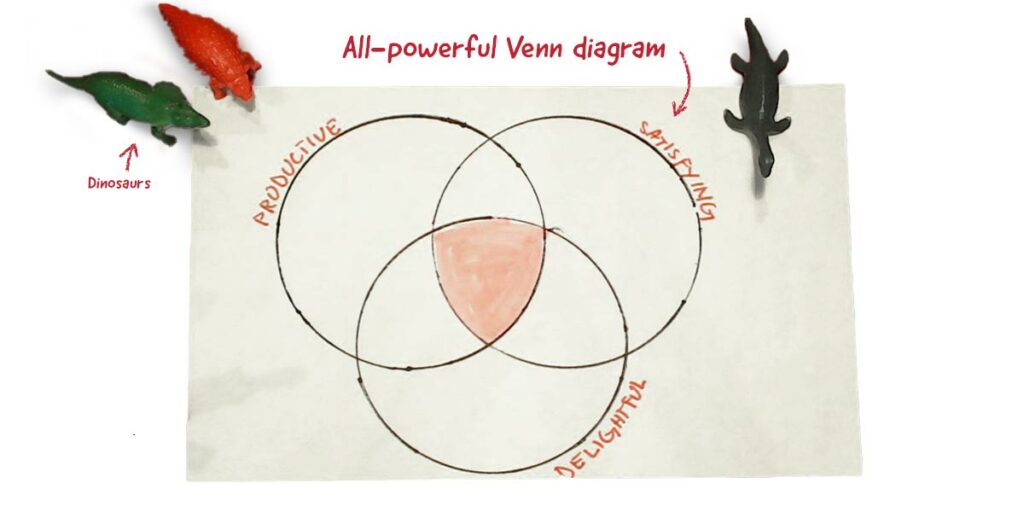
Let’s look at this as an all-powerful Venn diagram. After all, there is nothing like a quick and simple sketch to really sum up a complex concept. Pairing the visual with the verbal (pictures and words) makes for complete communication!
So we know HCD interactions need to be productive, satisfying, and delightful. Let’s walk through each of these in a bit more detail.
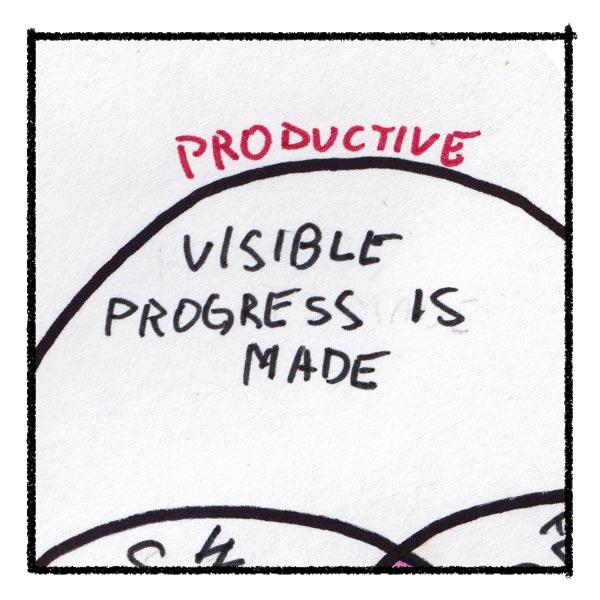
1. Productive
There are three primary levers you can pull to create the feeling of progress being made…
The first is to show how this moment in time fits into a larger project. Share how we got to the start of the meeting – and what will happen afterwards. How will the work that happens in that session directly impact future work and be supported by past work? This is even more important if you are coming in as a facilitator to help with a specific session that’s part of a much larger project.
Once, when I was working in retail, we had just finished a 4-hour workshop about “being more available to our clients” when my managing director pulled me aside and said, “Jesse, that was fun and all, but we came out with all the same solutions we’ve been talking about for years. Was this useful at all?” His question made me realize I hadn’t taken the time to see where this one session fit into the bigger picture of our office’s work on that project, and I’d possibly lost a supporter of HCD!
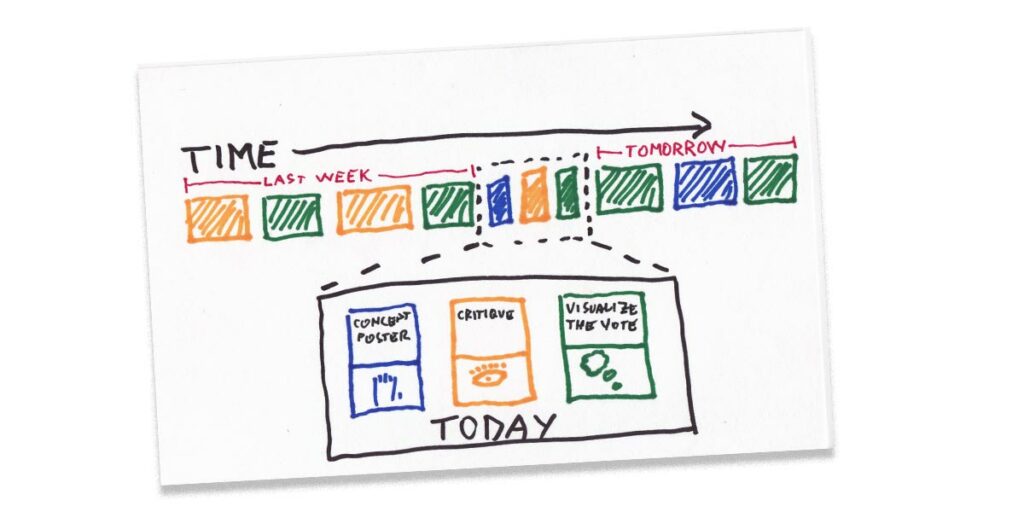
Secondly, in the session itself, it’s important to clearly state the objectives for the time you have together, and then show what you achieved at the end. You’ll want to especially point out how individual contributions directly supported the whole group achieving the outcome of the session – even if it was an outcome that you didn’t plan in advance! This can be particularly useful if you are designing a session for a stakeholder that has a specific need in mind and is already wary of HCD. Focusing on, and hitting, the requested outcomes will go a long way towards making HCD feel useful for everyone.
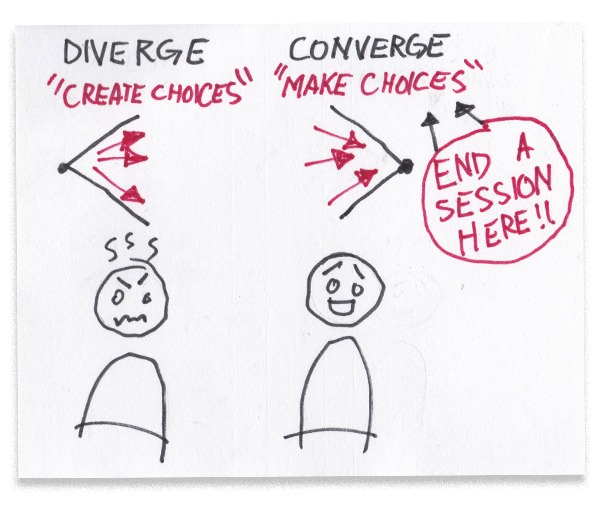
A third tactic to follow is to end a meeting by converging. Convergence – or as it relates to designing, “making choices” – feels powerful! Decisions were made! Alignment was achieved! We know what comes next and we have moved the project forward! On the flip side, divergence – or as it relates to designing, “creating choices” – feels uncomfortable because people wonder, “Well, what does it all mean, what are we going to do with all of this?” and leave the meeting feeling unsettled and unsure. End a session by converging, and everyone will leave with just a bit more bounce in their step and confidence in the direction the project is taking.
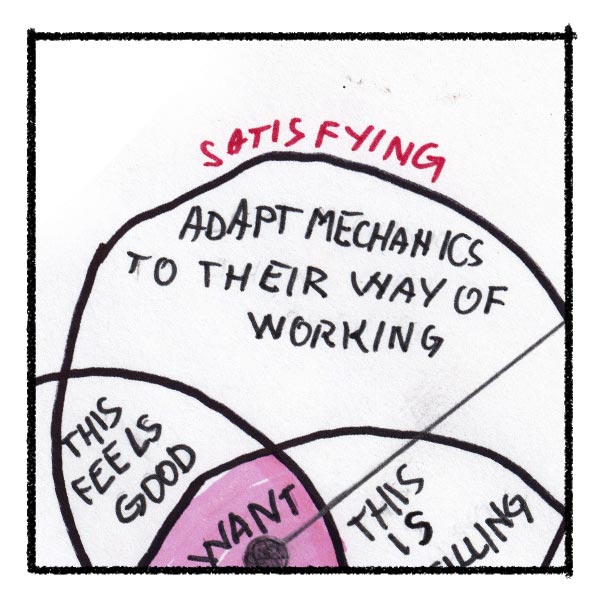
2. Satisfying
I volunteer for an international summer camp, and frequently help plan and facilitate their global summit. One challenge with this group is we work via 100% consensus — and while we are quite good at this, it does add some complications as a facilitator. I learned a huge lesson about getting buy-in from my participants during an evaluation session one year.
We were sharing our Roses, Thorns, and Buds when one participant broke down, saying, “We are just talking to sticky notes and looking at the wall, no one is making eye contact anymore.” I quickly changed our format. I stopped having folks put their stickies up on the wall, and asked them to use them as prompts to share their experience with the circle. After the evaluation ended, I collected all their stickies, and with a small group, we Affinity Clustered them and looked for common themes.
When I got home, I thought about that moment a lot (heck, it was five years ago and I still think about it!) What I took away from that moment was the lesson that the method wasn’t the problem, it was that I hadn’t adapted the method to our culture. I didn’t account for expectations about how the work should be done or anticipate people’s needs when it came to communicating feedback about the event.
If I was going to get that particular organization to see the value in HCD, I was going to need to adapt the mechanics and tools to their way of working; merging the power of their culture with the power of the LUMA System. The person who thankfully expressed themselves in that evaluation has become one of my greatest partners in helping to adapt HCD methods to fit the organizational culture. We find ways to work visually and collaboratively, and we almost never break into small groups. (We even figured out how to do an Important/Difficulty Matrix in a group of 30!)
This adaptation to culture is a necessary component of making HCD stick. Every group of people will have its own dynamics. Some need to see the efficiency, some need to see the innovative nature of design, and some need to see how their voice is being heard and considered, to name a few examples.
Generally speaking, all groups and individuals have a culture of work that meets their needs and personalities. Changing that culture can be hard, time consuming, and possibly fraught with complex issues. If a group’s style is functional for them, it is our job as facilitators to bring out their best work and to meet them where they are.
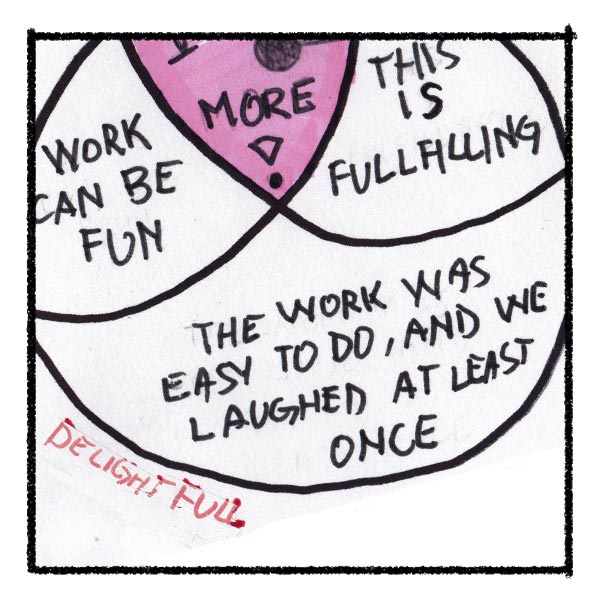
3. Delightful
The premise of this post implies that the folks you are trying to reach are unfamiliar with HCD, and therefore need encouragement to continue with the practice. I’m also going to assume that the first couple of times people join your sessions, it might be out of a kindness to you or because they have been compelled by some other reason, and not because they love HCD. They need to have fun in those first few sessions if you want them to come back for more!
When I say they need to have fun, I don’t mean that the sessions must be all play-time — though a little well-placed humor can go a long way, but that’s an article for another time! Making it easy to do the work is what makes the work fun. When was the last time you remember doing something really complicated and difficult with a steep learning curve and thought, “I really hope I get to do that again tomorrow!” Yeah, that’s not the choice I would make.
Here is a short list of ways to keep the work easy and fun so people want to try again:
- Keep the stakes low
- Use methods you are confident facilitating
- Start with just a method or two
- Ask a friend for help planning the session
- Do practice runs before going live
- Have all your equipment ready before starting
- Co-facilitate with a friend or colleague
- Do a relevant warm up activity
- Laugh at your mistakes
- Take a break in the middle
- Archive all of the artifacts
- Gather feedback after each session
- Invite the group to reflect on their experience
- Have everyone wear funny hats
Try to avoid making it “a big deal” every time you do HCD. Be prepared and take it seriously, but there might not be any need for a big production or formal announcement.
A couple years ago, at a weekend-long gathering of friends, we were attempting to decide what to do together. “Anyone mind if I lead this conversation?” I asked, and with their agreement, I had everyone write out their ideas for activities. We discussed which would be the most fun, and then which would be the most difficult, and BOOM! I placed our ideas on a grid, slapped on some labels, we picked one of the options, and started having fun! I had taken a winding, complicated conversation, and quickly made it easy and simple so that we could make a decision everyone was happy with.
At the end of the weekend one friend asked, “What was that thing we did yesterday? It was so efficient and fun!” The next year she asked to lead the Importance/Difficulty Matrix for our group, and ever since, she’s said she wants to learn everything I have to teach her about HCD and the LUMA System. All of that came from a simple, relaxed, subtle activity done on a Saturday afternoon. Let the methods speak for themselves and do the work for you.
Embrace the behaviors of innovators
The most important thing to ask yourself is, “What does this specific group need?” It’s human-centered design, after all. Design the process with the goal of gaining buy-in from each person. Remember the six behaviors practiced by innovative people and apply them to each situation. Strive to be…
- Empathetic: Learn about your participants and their needs.
- Iterative: Keep evolving your delivery.
- Collaborative: Find partners to work with.
- Visual: Be transparent and show your design.
- Questioning: Ask for feedback.
- Imaginative: Make the methods work for you.
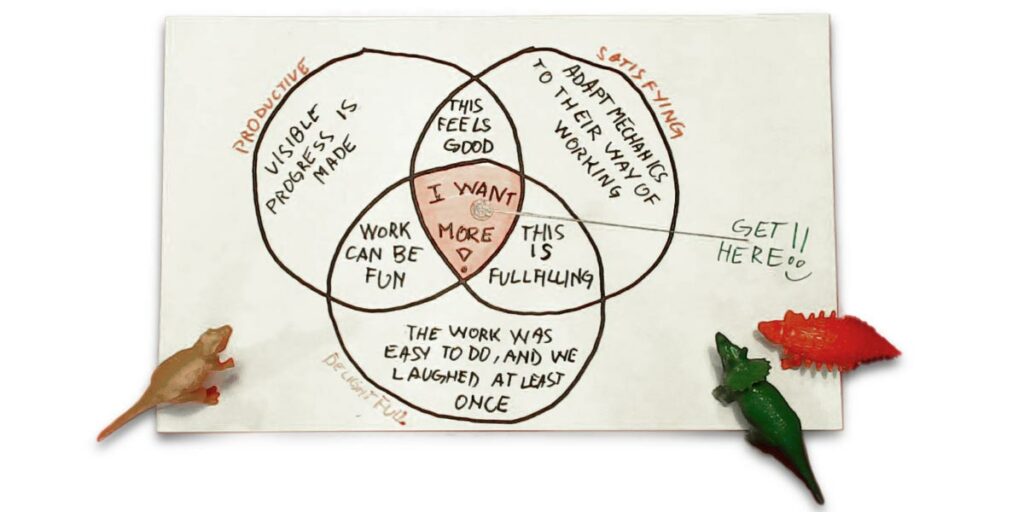
If you are intentional about designing experiences that are productive, satisfying, delightful, and human-centered, people will be equipped and excited to continue the journey with you.

